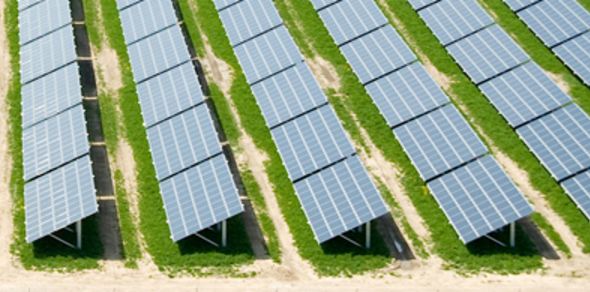The U.K. National Grid has published today its Summer Outlook Report for the year 2017.
According to the report, the transmission operator expects both peak and minimum demands on its transmission lines to be lower than in the summer 2016. “This is predominantly driven by an increase in embedded generation,” says the report.
By embedded generation, the National Grid refers to any generation (e.g. solar PV and combined heat and power systems of any scale) that is connected to the local distribution grids, rather than to the transmission network. Embedded generation “is not directly visible to National Grid and therefore acts to reduce demand on the transmission system,” added the firm.
This isn’t the first summer that the National Grid has forecast lower demand for power capacity to be transmitted through its wires. For example, in the summer of 2014, the U.K. transmission operator had forecasted 38.5 GW of high summer peak, which fell to 37.5 GW in the summer of 2015, 36.3 GW in the summer of 2016 and 35.7 GW for this summer, which is 600 MW lower than last year’s weather-corrected outturn.
This downward trend is largely due to an increase in embedded generation, particularly solar PV though, notes the report. as well as a decrease in underlying demand (underlying demand removes the impact of weather and the day of the week).
Solar PV: 1.8 GW in the next 12 months
The National Grid’s forecast for the deployment of solar PV systems in the following 12 months are impressive. The grid operator says “Embedded solar PV capacity has increased from 9.3 GW in February 2016, to 11.7 GW
in February 2017. We expect this upwards trend to continue, with an additional 150 MW of capacity expected each month for the
next 12 months. This equates to 13.5 GW of installed capacity by the end of February 2018.”
The report also analyses the effect of the solar PV generation to the overall transmission power system’s demand pattern. Daily peak demand timing is highly influenced by the level of solar radiation. Thus, “on a bright sunny day, the peak demand is likely to occur either in the morning between 8am and 9am, or after sunset,” concludes the report.
The National Grid is leading a number of projects collaborating with external partners to significantly improve the monitoring and forecasting of solar PV generation. A noteworthy project is developed in collaboration with the University of Sheffield and estimates the national solar outturn near real time. The data is accessible online via the Sheffield Solar web site.
pv magazine has recently published an analysis regarding the new energy transportation dynamics as the power systems move towards the decentralized model.
Solar PV's contribution to the UK economy
Meanwhile, the U.K. Office for National Statistics published today the final results of direct and indirect activity from the UK Low Carbon and Renewable Energy Economy Survey (UK LCRE) for the year 2015.
According to the data, LCRE activities generated £43.1 billion turnover in 2015, accounting for 1.3 percent of total UK non-financial turnover. Of this, the solar, onshore and offshore wind sectors combined accounted for 63.5 percent of all LCRE acquisitions in 2015.
The National Grid 2017 Summer Outlook Report can be downloaded here. And the UK LCRE Survey can also be downloaded via this link.
This content is protected by copyright and may not be reused. If you want to cooperate with us and would like to reuse some of our content, please contact: editors@pv-magazine.com.



By submitting this form you agree to pv magazine using your data for the purposes of publishing your comment.
Your personal data will only be disclosed or otherwise transmitted to third parties for the purposes of spam filtering or if this is necessary for technical maintenance of the website. Any other transfer to third parties will not take place unless this is justified on the basis of applicable data protection regulations or if pv magazine is legally obliged to do so.
You may revoke this consent at any time with effect for the future, in which case your personal data will be deleted immediately. Otherwise, your data will be deleted if pv magazine has processed your request or the purpose of data storage is fulfilled.
Further information on data privacy can be found in our Data Protection Policy.